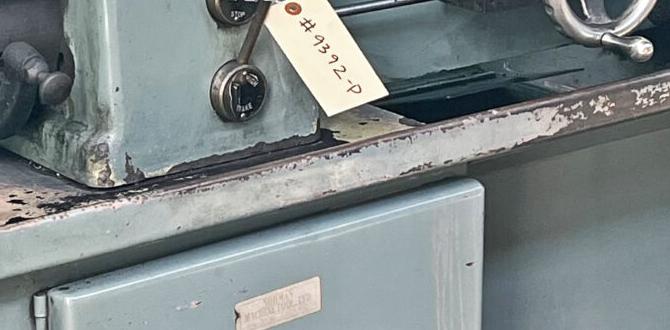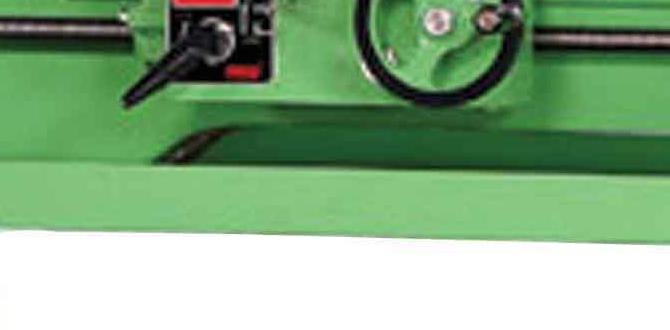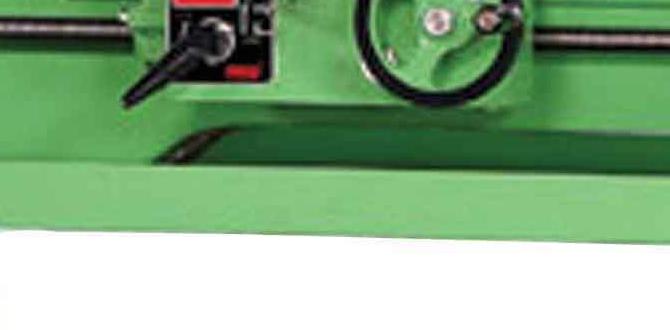Wood Lathe Dust Shield Design: Protecting Your Workspace in Style
Wood lathe dust shield design has evolved far beyond purely functional necessity. What was once a rudimentary piece of plastic or metal now offers an opportunity to enhance both the safety and aesthetics of your workshop. A well-conceived dust shield doesn’t just keep airborne particles at bay; it can become a sleek and integral part of your woodworking setup, reflecting your commitment to quality craftsmanship and a clean, organized environment.
The primary function of any wood lathe dust shield is to capture the vast amount of particulate matter generated by turning wood. Whether you’re working with hardwoods like oak and maple or softer woods like pine, the wood chips and fine dust produced can quickly permeate your workshop, settling on every surface, irritating your lungs, and posing a fire hazard. This is where an effective dust shield comes into play, acting as a crucial barrier between your lathe, your project, and your breathing space.
The Importance of Effective Wood Lathe Dust Shield Design
Choosing the right wood lathe dust shield design is paramount for several reasons. Firstly, effectiveness in dust collection. The best designs are engineered to channel the airflow generated by the lathe, along with the ejected particulate matter, directly towards a dust collection port. This often involves strategic shaping, smooth internal surfaces, and carefully positioned ports that align efficiently with common dust collection systems. A shield that simply deflects dust might keep the immediate work area clearer, but it won’t significantly reduce the overall airborne particle count.
Secondly, visibility and accessibility. A good design balances containment with the need for the turner to see their work clearly and access the lathe controls easily. Opaque shields, while offering good containment, can hinder visibility. Innovative designs incorporate clear panels, often made from durable polycarbonate or acrylic, allowing for unobstructed views of the turning process. Simultaneously, the shield should provide easy access to tool rests, tailstock controls, and the workpiece itself without requiring excessive dismantling.
Thirdly, adjustability and versatility. Woodturning projects vary enormously in size and shape. A truly exceptional wood lathe dust shield design will offer a degree of adjustability to accommodate these variations. This might include adjustable height, width, or angle, allowing the shield to be precisely positioned regardless of the workpiece diameter or the type of turning operation. For those who work with a variety of lathes or projects, a universal design that can be adapted to different machines is also a valuable consideration.
Exploring Innovative Wood Lathe Dust Shield Designs
The market offers a spectrum of wood lathe dust shield designs, catering to different needs and budgets. At the more basic end, you’ll find simple, often universal, guards that attach to the lathe bed or tool rest. These can offer a significant improvement over no protection at all. Their designs are typically straightforward, focusing on diverting the bulk of the chips away from the operator.
Moving up in sophistication, we encounter more purpose-built and feature-rich options. Many of these incorporate the clear panels mentioned earlier, significantly improving the user experience. The shaping of these panels and the overall housing is where the “stunning design” aspect truly comes into play. Manufacturers are increasingly considering ergonomics and aesthetics. This might manifest as:
Curved, flowing lines: Rather than sharp angles, many modern shields feature elegant curves that not only look good but also help to efficiently channel dust and chips. These smooth transitions minimize areas where dust can accumulate.
Integrated lighting: Some premium designs include built-in LED lighting, illuminating the workpiece more effectively and reducing shadows often cast by conventional workshop lighting.
Modular construction: Certain shields are designed with a modular approach, allowing users to customize their setup with different sizes of clear panels or dust collection ports based on their specific workflow.
Low-profile options: For those with limited space or who prefer a less imposing presence, low-profile designs offer effective dust containment without being overly bulky.
Materials Making a Difference in Wood Lathe Dust Shield Design
The material choice is a critical component of the overall design and functionality of a wood lathe dust shield.
Polycarbonate and Acrylic: These transparent plastics are the go-to materials for the viewing panels due to their excellent impact resistance and clarity. Polycarbonate is generally more robust and less prone to cracking, making it ideal for higher-impact environments. Acrylic is often more cost-effective and easier to work with for custom solutions. The smooth surface of these plastics also contributes to efficient dust shedding.
Steel and Aluminum: For the structural components and framing, metals like steel and aluminum are favored for their durability and rigidity. Powder-coated steel offers excellent corrosion resistance, while aluminum provides a lighter-weight and equally strong alternative. These materials can be expertly formed and welded to create robust and aesthetically pleasing enclosures.
* ABS and Other Plastics: For housings and smaller components, durable plastics like ABS are often used. They can be molded into complex shapes, contributing to both the functionality and the sleek appearance of the shield.
Beyond Protection: The Aesthetic Appeal of a Stunning Wood Lathe Dust Shield
A well-designed wood lathe dust shield isn’t just about safety; it’s about elevating your entire workshop experience. A shield that is thoughtfully engineered, with smooth lines, quality materials, and clever features, can transform a utilitarian piece of equipment into something that feels like a genuine addition to your creative space. It demonstrates a respect for your craft and your environment. When you invest in a dust shield that prioritizes both form and function, you’re not just buying protection; you’re investing in a more enjoyable, cleaner, and visually appealing woodworking journey. The impact on your workshop’s overall ambiance and your personal satisfaction can be surprisingly significant, proving that even the most practical tools can benefit from stunning design.




